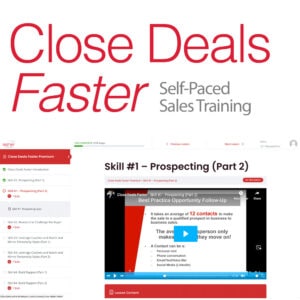How to Create a Customer Experience Strategy that Delivers Results

In today’s competitive business landscape, customer experience has become a vital factor that can make or break a company’s success. Customers are no longer satisfied with just purchasing products or services; they want an experience that goes beyond their expectations. With the emergence of digital technology and social media, customers have more power than ever before, and their opinions can easily spread to millions of potential customers worldwide.
As customers continue to demand a personalized and seamless experience across all channels, businesses must adapt quickly to meet their expectations. In fact, studies have shown that companies that prioritize customer experience tend to outperform their competitors in revenue growth, customer loyalty, and employee engagement.
Creating a customer experience strategy that delivers results is not just a nice-to-have; it has become a top priority for businesses of all sizes. From startups to established enterprises, companies that invest in customer experience can reap the rewards of increased customer satisfaction, loyalty, and advocacy.
In this blog, we will delve deeper into the importance of customer experience in today’s business landscape, the key components of a successful customer experience strategy, and how businesses can leverage technology to create personalized and engaging experiences for their customers. Whether you’re a small business owner or a CEO of a large enterprise, the insights shared in this blog will help you stay ahead of the curve and build a customer-centric business that delivers results.
Here are some steps to create a customer experience strategy that delivers results:
1. Understand Your Customers
A customer experience strategy is a comprehensive plan that outlines how a business can deliver the best possible experience to its customers. This strategy is essential for any business that wants to stand out from its competitors and build a loyal customer base.
To create a successful customer experience strategy, the first and most crucial step is to understand your customers. Knowing your customers involves gathering information about their preferences, expectations, and behavior when interacting with your brand. By doing this, you can create a tailored approach that speaks directly to their needs and wants.
One effective method to gain customer insights is to conduct surveys. Surveys can provide valuable information on customers’ demographics, purchasing behavior, and preferences. By analyzing this data, you can identify patterns and trends that can inform your customer experience strategy.
Another way to gain customer insights is to analyze customer data. By collecting and analyzing data from customer interactions, you can gain a deeper understanding of their preferences, pain points, and needs. You can use this data to create personalized experiences that address their unique needs and build a stronger relationship with them.
Monitoring customer feedback on social media and review sites is also crucial to understanding your customers. Customers often use these platforms to express their satisfaction or dissatisfaction with a brand. By monitoring these channels, you can quickly respond to feedback and address any concerns, ultimately improving the overall customer experience.
In summary, creating a successful customer experience strategy requires a deep understanding of your customers. By conducting surveys, analyzing customer data, and monitoring feedback on social media and review sites, you can gain valuable insights that can inform your strategy and help you build stronger relationships with your customers.
2. Define Your Customer Experience Goals
In today’s competitive business landscape, customer experience has become one of the most crucial factors for building a successful brand. It’s not just about providing a good product or service, but also about creating a positive emotional connection with your customers that keeps them coming back for more. To achieve this, businesses need to have a clear understanding of their customers and what they want from their brand. Once that understanding is established, the next step is to define customer experience goals that align with your brand’s overall vision.
Customer experience goals are the specific outcomes you want to achieve when customers interact with your brand. They should be tailored to your target audience, considering their preferences, values, and expectations. To create effective customer experience goals, they should be specific, measurable, achievable, relevant, and time-bound, also known as SMART goals.
1. Specific:
Your goals should be clear and precise, so there’s no ambiguity about what you’re trying to achieve. For example, if your goal is to improve customer satisfaction, you need to define what that means in measurable terms, such as increasing your Net Promoter Score (NPS) by a certain percentage.
2. Measurable:
You need to be able to track and measure progress towards your goals. This could involve collecting data through surveys, customer feedback, or website analytics. By setting specific metrics, you can easily see whether you’re making progress towards achieving your goals or not.
3. Achievable:
Your goals should be challenging but also realistic. Setting unrealistic goals can be demotivating and lead to failure. Ensure that your goals are within your company’s capabilities and align with your available resources.
4. Relevant:
Your goals should be aligned with your brand’s overall vision and values. They should also be relevant to your target audience and meet their needs and expectations.
5. Time-bound:
Your goals should have a specific deadline for completion. This helps to create a sense of urgency and keeps everyone focused on achieving the desired outcome. Additionally, setting deadlines helps to track progress and identify any areas where adjustments need to be made.
In summary, creating effective customer experience goals is critical to building a successful brand. By taking the time to understand your customers and setting SMART goals, you can create a customer experience that not only meets but exceeds expectations. This can lead to increased customer loyalty, brand recognition, and revenue growth.
6. Map the Customer Journey
Creating an effective customer experience strategy is a critical component for businesses looking to succeed in today’s competitive marketplace. To develop such a strategy, it’s important to understand the customer journey from start to finish. This means mapping out every interaction that a customer has with your brand, from the very first contact to the final purchase and beyond.
Mapping out the customer journey involves taking a detailed look at every touchpoint along the way. This includes everything from the initial marketing message that catches a customer’s attention, to the experience of browsing your website or visiting your physical location, to the interactions they have with your customer service team, and beyond. By breaking down each of these touchpoints and examining them closely, you can identify areas where customers may be experiencing frustration or confusion and take steps to address these issues.
The goal of mapping out the customer journey is to create a seamless and enjoyable experience for customers. By understanding the journey that customers go through when interacting with your brand, you can create a customer experience that is personalized, convenient, and easy to navigate. This can lead to higher levels of customer satisfaction and loyalty, as well as increased sales and revenue.
Once you have a clear picture of the customer journey, you can begin to identify specific areas where improvements can be made. This may involve streamlining the checkout process on your website, providing more responsive customer service, or improving the quality of your product or service. By addressing these areas of concern, you can create a more positive and memorable experience for your customers and increase the likelihood that they will return to your brand in the future.
In conclusion, mapping out the customer journey is an essential step in creating an effective customer experience strategy. By identifying all touchpoints, analyzing the customer’s experience at each one, and addressing any issues that arise, businesses can create a seamless and enjoyable experience that leads to higher levels of customer satisfaction and loyalty.
7. Develop a Customer-Focused Culture
Creating a customer-focused culture is a key element to achieving success in any business. It is not just about offering excellent products or services, but also about providing a top-notch customer experience. In today’s competitive market, a company’s ability to attract and retain customers largely depends on its ability to create a culture that is entirely customer centric.
To create a customer-focused culture, it is crucial to ensure that all employees in the company understand the importance of the customer experience. This means that everyone, from the top down, must be trained to prioritize customer satisfaction. From the CEO to the frontline employees, every individual in the organization should understand that their actions and decisions have a direct impact on the customer experience.
Moreover, customer-focused culture requires empowerment. Employees must have the freedom and resources to make the necessary decisions to deliver an exceptional customer experience. This means giving employees the ability to resolve customer issues independently without waiting for a supervisor or manager to intervene. Empowered employees can make a significant impact on the customer experience, which ultimately helps to create a positive company image and brand loyalty.
Lastly, creating a customer-focused culture requires a fundamental shift in mindset from focusing solely on profit to prioritizing customer satisfaction. The company culture should value customer satisfaction above all else, with all employees working towards this common goal. In other words, creating a customer-focused culture involves setting and meeting customer expectations, responding quickly and efficiently to their needs, and building strong relationships based on trust and reliability.
In conclusion, creating a customer-focused culture is essential for any business that seeks to deliver an exceptional customer experience. It involves ensuring that all employees are aligned with the company’s vision and values, providing the necessary training and empowerment, and making customer satisfaction a top priority. By doing so, companies can build long-lasting relationships with their customers, enhance their reputation, and brand, and ultimately drive business growth and success.
8. Leverage Technology
In today’s digital age, customers expect seamless and personalized experiences from businesses. Technology has become an integral part of the customer experience, allowing businesses to provide efficient and effective service to their customers.
One of the primary benefits of technology is its ability to automate processes. By using customer experience tools, businesses can automate repetitive tasks, such as responding to customer queries or processing orders. This saves time and allows employees to focus on more complex tasks that require human attention. Additionally, automation ensures consistency in service delivery, which helps to build customer trust and loyalty.
Personalization is another important aspect of the customer experience. Technology has made it possible to collect and analyze large amounts of data about customers, including their preferences, behaviors, and purchase history. This data can be used to create personalized experiences for customers, such as personalized recommendations, targeted marketing messages, and customized product offerings. Personalization not only improves the customer experience but also increases customer engagement and loyalty.
Customer feedback is crucial for businesses to improve their products and services. Technology provides various tools to collect and analyze customer feedback, such as online surveys, social media monitoring, and sentiment analysis. These tools help businesses to understand customer needs and preferences, identify areas for improvement, and make data-driven decisions. By acting on customer feedback, businesses can enhance the customer experience and build a positive reputation.
In conclusion, technology can be a powerful tool for delivering a great customer experience. By automating processes, personalizing experiences, and gathering customer feedback, businesses can create a more efficient and effective customer experience. With the right customer experience tools, businesses can gain a competitive advantage by meeting customer expectations and building long-lasting relationships.
9. Measure and Optimize
Delivering a positive customer experience is critical for the success of any business, regardless of its size or industry. It is essential to understand that customers nowadays have numerous choices and are often willing to switch to a competitor if they don’t have a satisfying experience with your brand.
A customer experience strategy is a plan of action that businesses develop to meet and exceed customer expectations. However, having a plan is not enough to guarantee success; measuring and optimizing the strategy is equally important.
One way to measure the effectiveness of your customer experience strategy is through customer satisfaction metrics. This can be done through surveys, feedback forms, or other means of collecting customer feedback. Understanding how satisfied your customers are with your products, services, and overall experience can help you identify areas for improvement.
Another metric to consider is Net Promoter Score (NPS). This measures how likely customers are to recommend your business to others on a scale of 0-10. Customers who score you as a 9 or 10 are considered promoters and are likely to recommend you to others, while those who score you 6 or below are detractors and could potentially damage your reputation. Understanding your NPS score and the reasons behind it can help you make improvements to your customer experience strategy.
Finally, customer retention is a key metric that reflects the number of customers who continue to do business with you over time. A high customer retention rate indicates that your customers are satisfied with your brand and are likely to continue doing business with you. On the other hand, a low retention rate can indicate that there are issues with your customer experience strategy that need to be addressed.
Using these key metrics to measure and optimize your customer experience strategy is crucial to ensure that you are delivering the best possible experience to your customers. By making improvements based on customer feedback and data, you can create a positive reputation for your brand, increase customer loyalty, and ultimately drive revenue growth.
Overall, creating a customer experience strategy that delivers results requires a deep understanding of your customers, clear goals, a well-mapped customer journey, a customer-focused culture, the use of technology, and a commitment to measuring and optimizing your strategy. By following these steps, you can create a customer experience that delights your customers and drives business success.
Read more about a related article from Super Office.
Creating a customer experience strategy that delivers results is essential for any business that wants to thrive in today’s competitive marketplace. By understanding your customers’ needs and preferences, defining your brand’s voice and tone, and leveraging the right channels to engage with your audience, you can create a seamless and personalized customer experience that builds loyalty and drives revenue.
Remember that your customer experience strategy should be an ongoing process that evolves with your customers’ changing expectations and feedback. It’s crucial to continually measure the effectiveness of your customer experience efforts and adjust as needed.
Moreover, investing in a customer-centric culture and training your employees to deliver exceptional customer service is critical to ensuring the success of your customer experience strategy. With a strong commitment to putting your customers first, you can differentiate your brand from the competition and build long-term relationships that generate sustainable business growth.
By following the best practices and tips outlined in this guide, you can create a customer experience strategy that not only meets but exceeds your customers’ expectations, driving growth and profitability for your business in the process. We, Asher Strategies wants to share also our best practices related to this, just contact us at (202) 469-7489.



